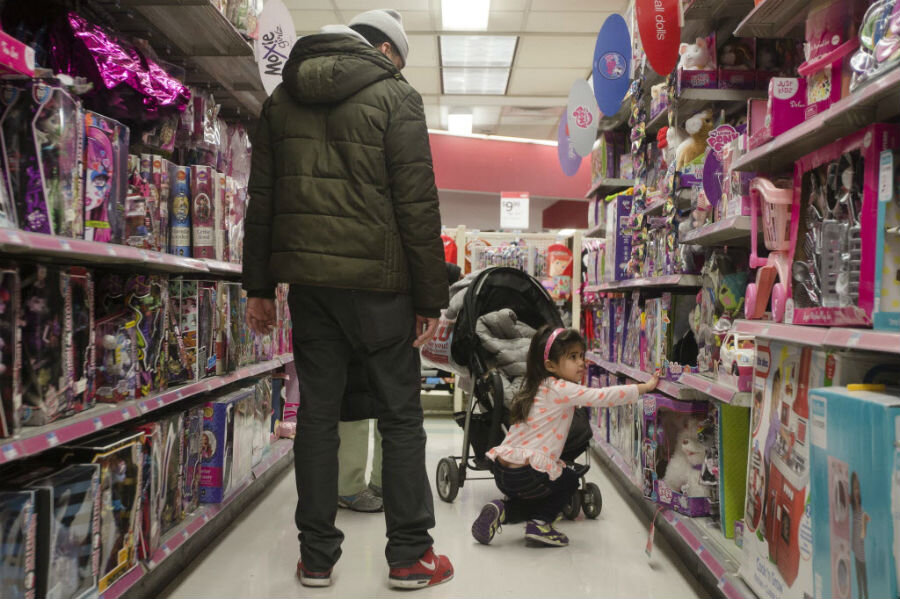Trouble in Toyland: Which toys should parents avoid this holiday season?
Loading...
Parents beginning their holiday shopping for young children may want to think twice before buying a Hello Kitty bracelet, latex punch balloons, or a Dora the Explorer backpack.
That's according to the annual "Trouble in Toyland" survey released by the US PIRG Education Fund. The survey, now in its 29th year, examines toys on the market and in homes to determine whether they meet safety standards for children. Since its inception, the survey has led to an estimated 150 recalls over the years. In 2013, for example, 11 million toys were recalled.
Toy safety standards get enforced by the Consumer Product Safety Commission. Those standards include limiting the amount of toxins in toys; size requirements for toys; mandatory warning labels about choking hazards; ways to keep magnets and batteries inaccessible; and limits on the amount of noise toys can make.
After assessing hundreds of toys, the survey found that unsafe toys "remain widely available." The Dora the Explorer backpacks and Hello Kitty bracelets were found to contain phthalates, which doctors consider a toxin, for example, while the punch balloon had a part found to be a choking hazard.
The top hazards found in toys include:
- Lead
- Chromium
- Phthalates
- Small parts that might block a child's airway
- Small balls
- Balloons
- Magnets
- Batteries
- Excessive noise
Toxic hazards were found in five toys, which include a set of police and sheriff badges and a tambourine. But most of the toys listed in the survey featured a form of choking hazard, such as a set of foam blocks and a bouncy ball.
In addition to choking and chemical hazards, in some cases, "the consequences can be fatal," the survey notes.
Although the report says safety standards have improved in recent years, it urges policymakers and parents to be more vigilant in the safety laws that get enforced and in the types of toys purchased and brought home.
Basic steps the survey urges to maintain safety include gauging whether a toy is too loud before purchasing it and checking to see if batteries will remain inaccessible to children during use. And for toys families already own, the survey recommends removing small batteries, placing tape over the toy speakers to mitigate loud noises, and placing small parts out of reach of children.






